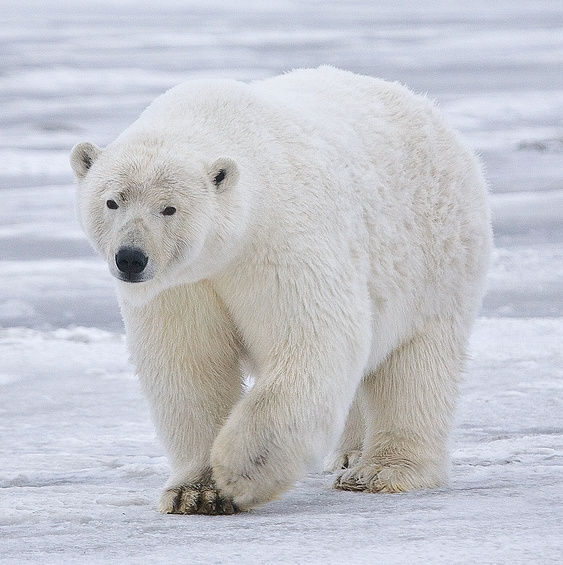
CREATURE-PEDIA
Polar Bear




Sub zero temperatures, frigid winds and frozen forbidden ice as far the eye can see, it’s the arctic circle, to dominate here, a predator must not only be a ferocious killer, but must also survive the hashes environment on our planet. The only suitable species is the polar bear, dating back only 200,000 years, the polar bear is not only the youngest species of bear, it’s also the largest. Standing 10 to 12 feet tall on its hind legs, this predator can weigh up to 2200 lbs, found in arctic regions, polar bear are in every corner of the north pole ranging from Russia to Denmark to Canada. Almost completely carnivorous, they prefer eating ringed or bearded seals, however, the most resourceful polar bears can capture a beluga whale and while not common, reports shown up to 150 bears all feasting on a giant beached whale. Spending most of its year floating around on large patches of ice, polar bears benefit from their warm and melty funcional fur coat. This dowel layered camouflage coat contains many hollow, transparent hairs that catch the sun’s rays for warmth, while the outer, oily layer dries quickly so the warm woolly undercoat can keep them comfortable, in the freezing regions from the north pole or snowy ice patches stretch from miles on end. It’s nearly impossible to see anything except white or hear anything beyond the windy gusts created by the crashing ocean so to compensate, they use their height and sense of smell to track down prey. Polar bears travel upwind allowing them to catch the scent of prey up to 20 miles away, seals (the prey of choice) normally break holes into the ice pax, then they use these holes as air/breathing holes as they swim under the ice to hunt for fish. Polar bears catching the unmistakable scent of a meal, will journey to find new breaks in the ice and in their preferred style of catching prey known as “still hunting”, polar bears will just sit and wait for a seal to pop out of the hole when the seal surfaces, the polar bear will grab the prey’s head with its powerful jaws. In most cases, the polar bear will crush the skull in its jaws if the prey’s too large, the polar bear will finish it off with a powerful swap to the head, these water holes might appear just once for several miles so polar bears memorize their locations for a constant source of food. If lucky, polar bears will discover that some whales, like the beluga also use these holes to breathe even if the beluga see they killer, the polar bear calmly waits because it knows the whale can only holds its breath for 15 minutes so sooner or later, it has to come up. Then using its powerful jaws, the polar bear is able to lift up a 1320 lb whale out of the water. They get all their needed water from from their meals after feeding. Polar bears take special care to clean their coats by rolling around in the snow or taking a quick dip in the ocean, they insure to remain white. Polar bears know their camouflage is their greatest weapon, other methods for hunting include seeking up on sunbathing seals lying flat on the snow, polar bears push themselves forward with their powerful hind legs and then leap 6 feet to make the kill. Although polar bears are not the only species to become endangered because of man, they’re the first to the considered to be a threatened species due to global warming, because of the rising temperature, ice pax break up earlier retreating the polar bears to land. The polar bears are unable to eat enough for preparation for the summers, leaving many to starvation unless changes are made, polar bears known today, could be extinct in 100 years with only 25000 left in the world, one of nature’s favourite predators has having its intelligence and adaptability put into the ultimate test.
Fun Fact
Polar bears are the largest bear/land carnivore in the world.
Fun Fact
Polar bears can stand up to 10 feet tall on its hind legs.

